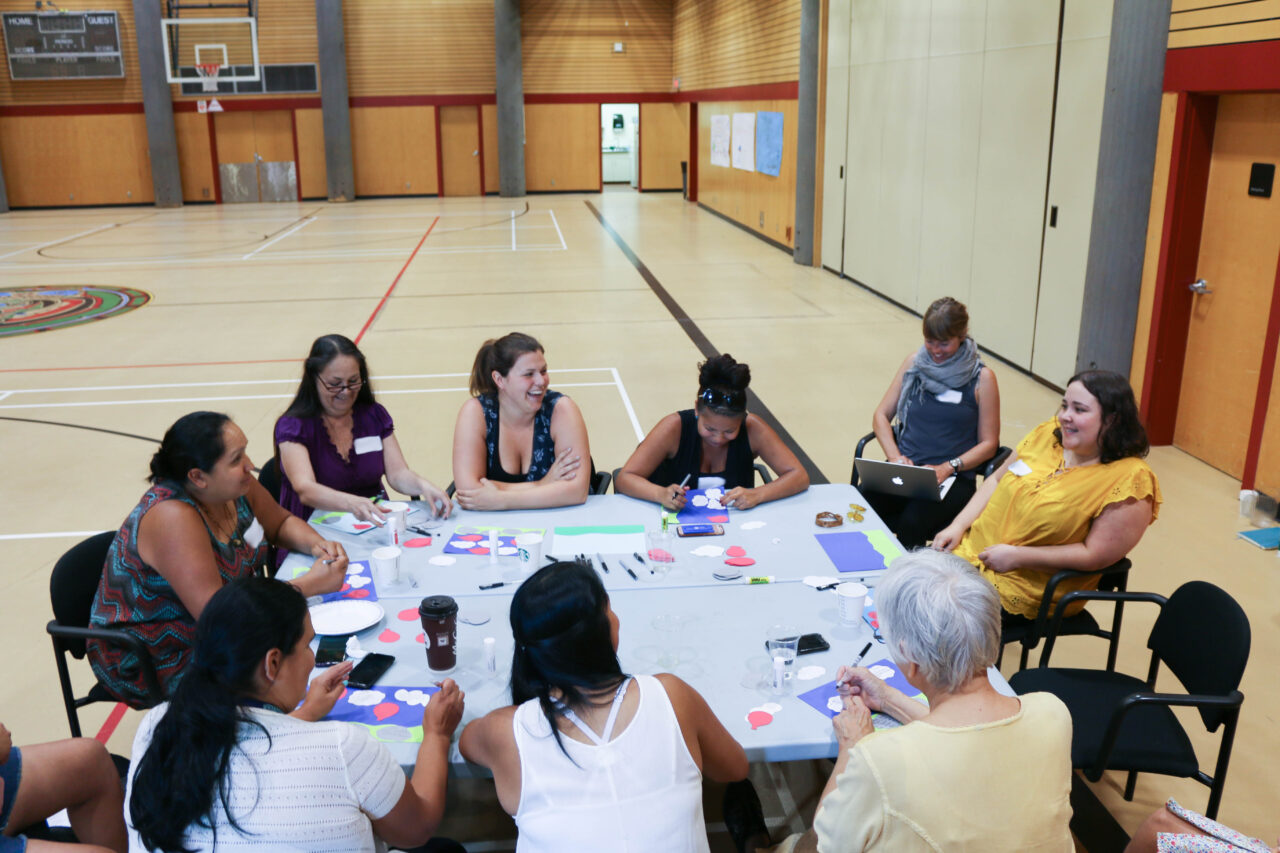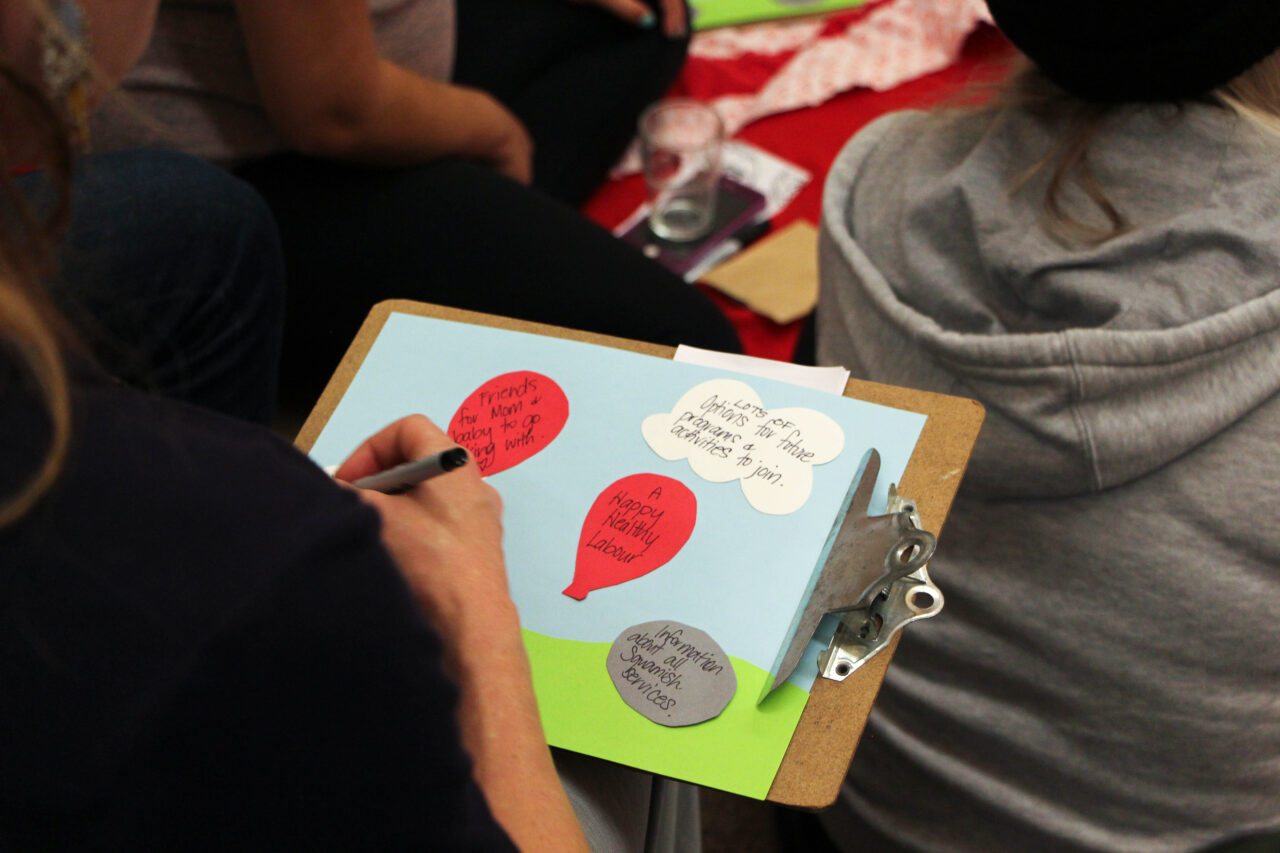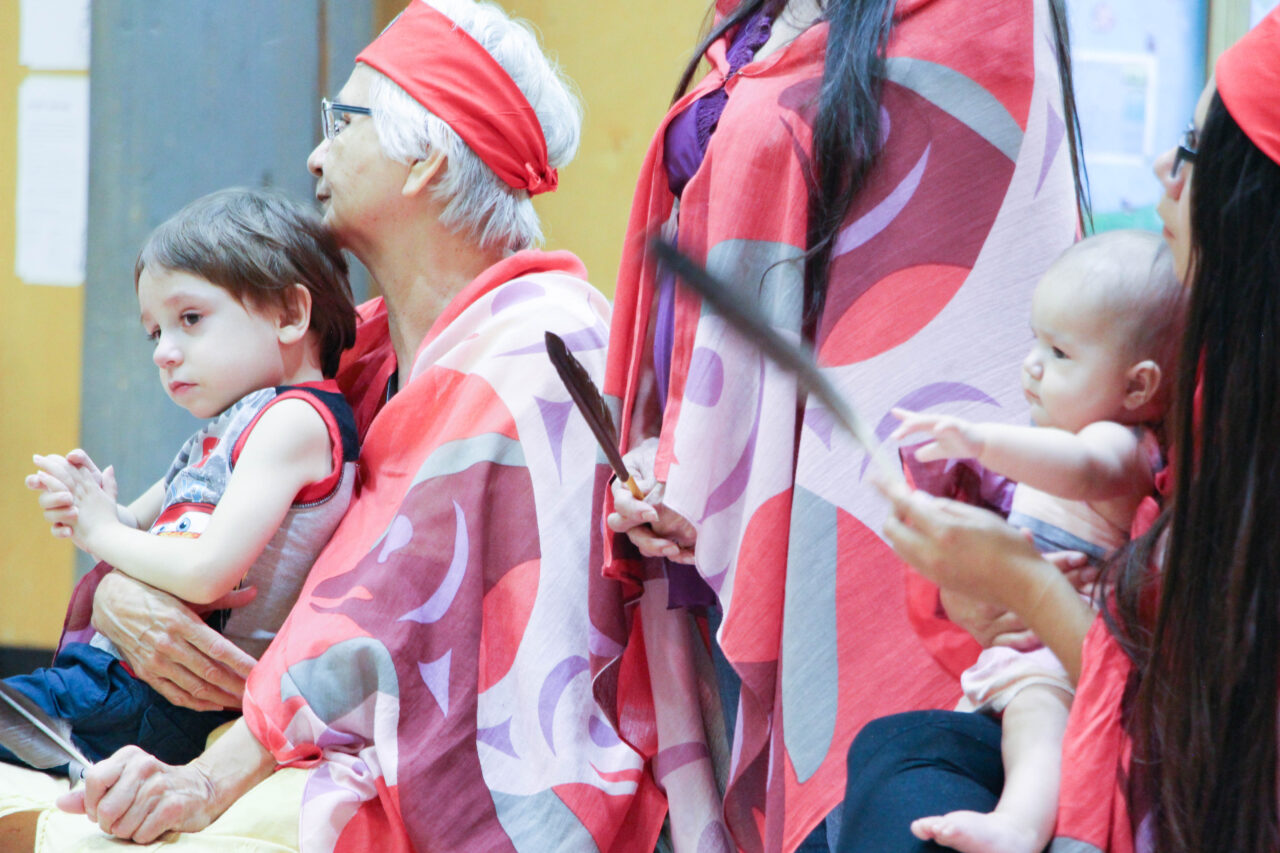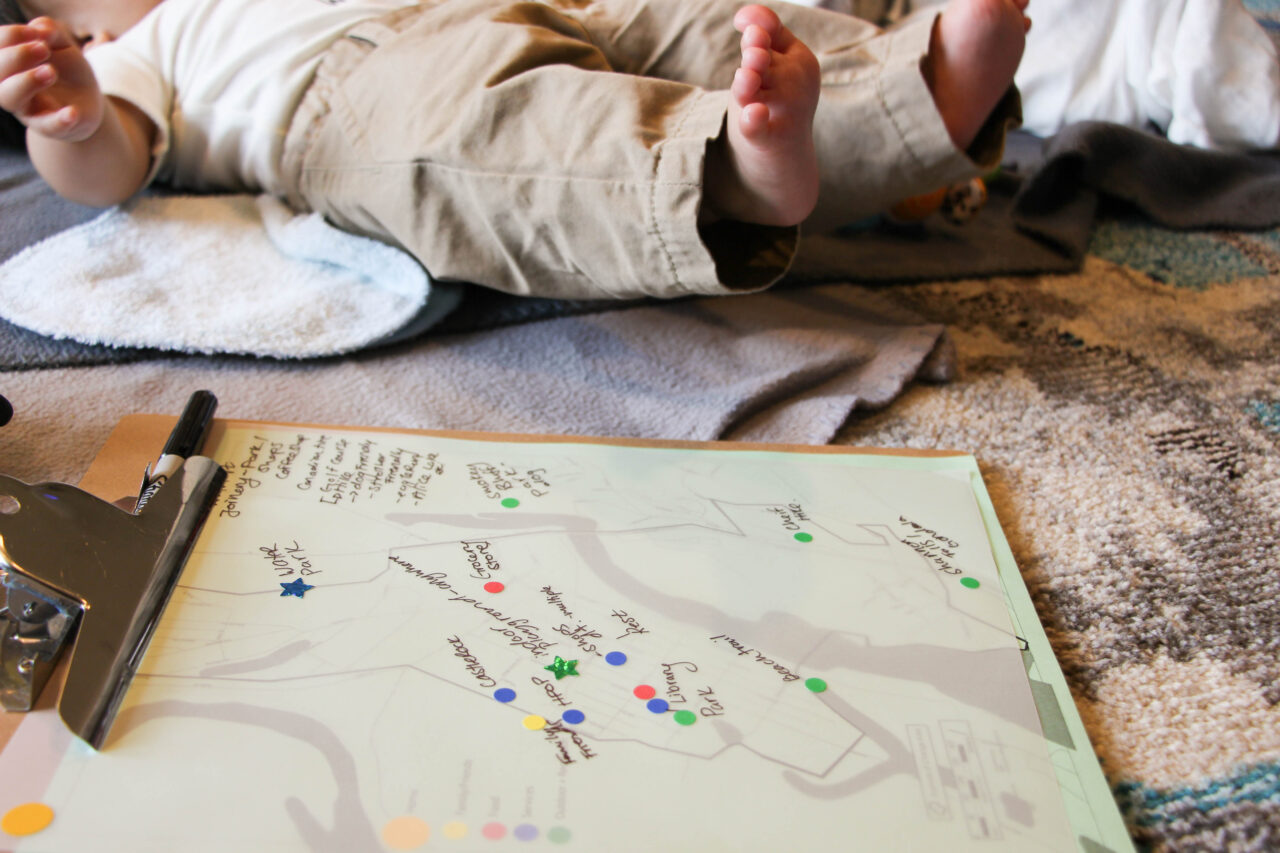Designing Healthy Futures with Squamish Nation Families

Posted on | Updated
The Health Design Lab worked with United Way and SPARC BC to engage families in identifying what a supportive, inclusive community would look like.
Since spring 2018, the Health Design Lab has been working with United Way of the Lower Mainland and the Social Planning and Research Council of BC (SPARC BC) on the second phase of the Squamish Avenues of Change project. This project phase seeks to engage stakeholders in Squamish, BC in identifying opportunities to improve community and neighbourhood supports for children and families, using a human-centred design approach.
Led by United Way, Avenues of Change is a multi-community initiative focused on creating and maintaining supportive environments to strengthen the healthy development of young children ages 0-6. The Avenues of Change program is grounded in research that shows physical and social environments influence health and wellness, and that building healthy neighbourhoods and communities is key to ensuring children and families thrive.
The Health Design Lab team included director Caylee Raber, research associate Sarah Hay, coordinator Nadia Beyzaei, and student research assistant Nicole Preissl, a 4th year Industrial Design student. Together with colleagues from United Way and SPARC BC, they consulted key individuals and groups on their concerns, needs, and desires for their community, by combining design and planning methodologies. In particular, the Health Design Lab team led outreach and engagement of families in Squamish.

“The initial challenge was connecting with families,” explained Caylee. “We identified existing programs that were happening around Squamish and dropped in on those to engage people. We attended a playground drop-in group, a healthy pregnancy outreach program, a new mom cooking class, and visited the A’yas Lam’ Family Program.”
The Sḵwx̱wú7mesh (Squamish) Nation includes 3,600 people; while their ancestral lands include much of what is now called Vancouver, their main community is on the north side of the Burrard Inlet, located near the town of Squamish. The team felt it was important to engage the Squamish Nation community in spaces where they felt safe and comfortable, so they collaborated with Joy Joseph-Mccullough, Association Education Director, and Charlene Williams, Cultural Language Worker to collectively engage Squamish Nation families.
The project team wanted to honour the lived experiences of Squamish Nation families and make space for them to share their struggles as well as their hopes and dreams. To facilitate these conversations, the Health Design Lab team created a series of hands-on participatory design activities to support families in expressing their thoughts and ideas.

These activities were used in two key engagement sessions organized for Squamish Nation families, in collaboration with Joy, Charlene, and Roseanne George, the A’yas Lam’ Family Program coordinator. The Health Design Lab team had a loose structure for activities, as well as goals for the information they wanted to collect, that allowed for flexibility based on how the sessions unfolded. “None of our activities went quite as planned,” says Caylee. “But there’s definitely a balance between providing our participatory design research approach, and stepping back and allowing the community to do things their way.”
She adds, “How we view research is different from traditional academic research. And what we saw in this project is that there are commonalities between Indigenous ways of doing things, and designerly ways of doing things. It’s about story, and it evolves as it happens.” Nadia mentioned “it’s about working with the community to find methods that go beyond standardized quantitative data gathering methods, to instead be centred around creating a safe space for fostering meaningful conversations about lived experiences.”

The session, at Squamish Nation Totem Hall, was about ceremony and began with a talking circle that lasted most of the morning and built a sense of connection and trust between participants. “It was probably one of the most eye-opening, transformational and healing things I’ve ever been through,” said Nicole. “Everyone was sharing from their heart, from their own perspective.”
For Nicole, an Emily Carr student and Research Assistant, the project provided an opportunity to build a relationship with Squamish Nation. Nicole was born and raised in Burnaby but is Sto:lo from Leq'a:mel first nation. Her great grandmother was Squamish from X̱wemelch'stn and her great-grandfather from Katzi. “I had never really felt comfortable claiming any Squamish roots because my family isn’t connected anymore,” she says. “But both Joy and Charlene were so amazing and made me feel so welcome. They inspired me to go back to the community and find my roots there.”
After the Talking Circle, the Health Design Lab team led two activities: Hopes and Dreams, and Wishes for Our Community. The first asked parents to identify high-level aspirations, while the second was grounded in important needs, like safety, transportation, and nutrition, and possible solutions.
“I found that a lot of things that the parents were discussing as needs were issues and obstacles I had faced myself as a young Indigenous person growing up,” Nicole says. “Like having culture and language programs is something that I wanted and I was so happy to see it brought up. I would have benefitted from that so much, and I'm glad that future generations will be able to participate in programs like that.”

The Hopes and Dreams activity also generated insights that showed Squamish Nation families had different needs from other families who participated in the project. “It was really apparent in the activities the different level of needs. Their hopes were so fundamental, like ‘I want my child to be accepted,’” says Caylee. “That’s not something the other families thought to ask for, that’s a given for them. The parents were also really taking responsibility, thinking about what they needed to do to achieve those dreams, rather than what they wanted others to do.”
The event concluded with an Uplifting Ceremony that was held with the broader community to thank and give recognition to the families who had participated.
A session was held at A’yas Lam’ Family Program, and was co- facilitated by Roseanne George. Participating families, who had brought along their young children to play, were first asked to identify the strengths and challenges of the community aloud with one another, to build trust and solidarity. Through sharing, families realized that they shared similar challenges and struggles. Next, they participated in an activity called Places I Go + Places I Wish For, mapping community services and resources that they use as well as ones that they wished existed.

The insights from both sessions were summarized into key findings and recommended action strategies, which were taken back to the Squamish Nation for validation. A report comprising the full findings from all participating families in the Squamish community will be released, leading to Phase 3 of the Avenues of Change project which will include implementation of several action strategies identified through this collaborative process.
For Nicole, the experience has shaped the final year of her Emily Carr studies. “The Health Design Lab gave me great experience in a professional setting, taking what I learned and applying it,” she says, adding, “I’m doing talking circles now as part of my grad project. When you’re just sitting and listening and hearing what people are saying, you feel really safe. You feel like you can share what’s in your heart.”